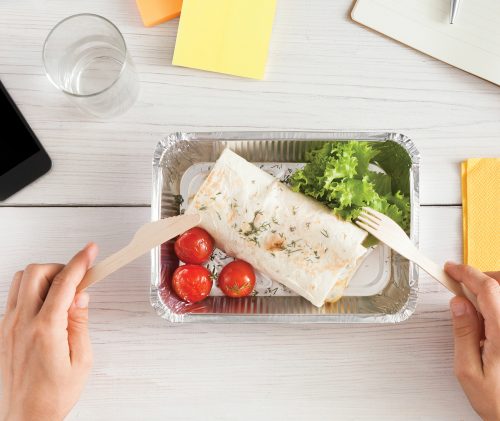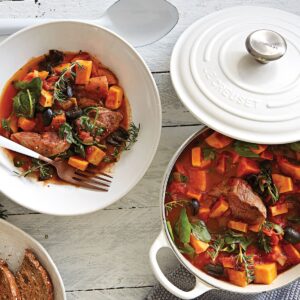
When you work nine to five, it’s not easy to prepare a healthy lunch every day. Nutritionist Nicola Jackson has 11 easy tips to make bought lunch healthier.
Choosing a healthy lunch from a café, bakery or restaurant, that you enjoy and can provide sustained energy to get through the afternoon, is not always easy. To help you decode the menu and get what you really want, here’s a guide of what to look for.
Start with the basics
1. To put together a healthy meal, choosing minimally processed foods from the different food groups is a good place to start. This provides slow release carbohydrate, protein and fat, as well as a range of vitamins and minerals to provide energy, nutrition and satisfaction.
This is easy to do at home, but you can do it most of the time when you’re out too. So what does this look like practically?
If you just choose a green salad, it’s not a balance of the food groups and you’ll feel hungry soon after. But adding some roast kumara, chicken and avocado will provide a range of the food groups (vegetables, meat, starchy foods and healthy fats). Something as simple as a chicken and salad wholegrain sandwich is an example of a mix of the food groups.
2. Listen to your body. Healthy eating is about nutrients, but it’s also about enjoying your food and knowing what makes you feel good. If you order an item you don’t really feel like, because it is the healthiest thing on the menu, chances are you’ll grab something else later anyway. Find a balance between satisfaction and nutrition.
Decoding menu language and the ‘health halo’ effect
3. It’s easy to assume some items are inherently healthy by their name, but that’s not always the case. Smoothies are a case in point. Some cafés make smoothies with a fruit juice or ice cream base, meaning they contain a significant amount of sugar or saturated fat. Don’t be afraid to ask what is in your order.
4. When a food is labelled ‘free from’ something, it’s easy to fall into the trap of thinking it must be healthier. But foods that are refined sugar free, dairy free and gluten free are not necessarily healthier than their counterparts. For example, a dairy-free, gluten-free cake can still be nutritionally similar to another cake that contains these items. The same goes for the terms ‘organic’, ‘raw’ or ‘natural’. An easy way to get around it is to look at the item without the label in front of it – would it be an everyday choice?
5. ‘Refined sugar free’ can be misleading and many believe it to be a healthy choice. Yes, unrefined sugars may contain small amounts of vitamins and minerals, but they are nutritionally insignificant. Sugar, refined or not, is still sugar.
Quick tips
6. If an item contains the word ‘creamy’ then it’s probably cooked using cream, therefore high in saturated fat. If something is battered or crumbed it could be deep fried, so double check.
7. Items made with whole grains, such as brown rice or quinoa, are more nutrient dense than those made with refined grains, such as white rice, couscous or pasta.
8. Wholegrain breads are more nutritious than white breads or wraps. Sourdough bread has a lower glycaemic index, providing a slower release of sugars to the blood.
9. Don’t be afraid to ask for changes to your order. For example, if you know they are heavy handed with the butter, you could ask for less or none. Or you could ask for your dressing or sauce on the side, switch bacon for salmon or order vegetables instead of hot chips.
Feel your fullness
10. Portion sizes when eating out are often much larger than what you’d make at home, especially for treat foods. A scone or a muffin might be double a ‘usual’ serving, or more. We often eat things as a ‘unit’ and eat the whole thing regardless of size – it’s autopilot eating. To get out of this habit, cut larger portions in half, and put the other half away. If you want more, you can have it, but it helps you think about it.
11. Rather than pushing past the point of comfortable fullness, simply because you’ve paid for a meal, get a doggy bag or just leave it behind. You may feel it’s a waste, but it’s no more wasteful to leave it than eating it when you don’t feel like it and feeling bloated and overfull afterwards.
What do some healthier lunch options look like?
These are great options when you’re at a bakery or café.
- Frittata and salad
- Salad and chicken sandwiches on grainy bread
- Salads that contain a range of the food groups, for example, a Turkish salad with tabouli (grain based), salad vegetables, chicken and hummus
- Brown rice sushi and a side of edamame beans
- Poached eggs on grainy toast with grilled tomato, mushroom and avocado
- Smoked salmon on kumara rosti with salad.
www.healthyfood.com










